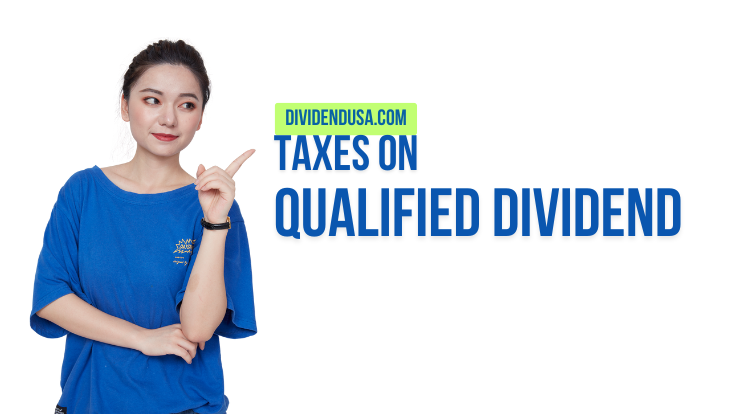Understanding how qualified dividends are taxed is essential for investors who want to maximize after-tax returns. This comprehensive article will explain the definition of qualified dividends, discuss their tax benefits, outline the IRS requirements, describe the specific tax brackets for 2025, and answer common investor questions.
1. What are Qualified Dividends?
Qualified dividends are a special category of dividends paid by U.S. corporations (or certain qualified foreign corporations) to investors. These dividends receive favorable tax treatment, meaning they are taxed at the capital gains tax rate instead of the typically higher ordinary income rate. The intention behind qualified dividends is to incentivize long-term investment in the stock market.
Table of Contents
2. Qualified vs. Ordinary Dividends
| Feature | Qualified Dividends | Ordinary Dividends |
|---|---|---|
| Tax Rate | 0%, 15%, or 20% (capital gains) | 10% to 37% (ordinary income) |
| Eligibility Requirements | Must meet IRS criteria | No special requirements |
| Source | U.S./qualified foreign corporations | Any corporation |
| Holding Period | 61 days in the 121-day window | No holding period |
For most investors, qualified dividends are preferable, as they lead to a lower tax bill compared to ordinary dividends, which are taxed at the same rate as your wages or salary.
3. Tax Rates for Qualified Dividends (2025 Brackets)

Qualified dividends are taxed at these special rates based on your taxable income and filing status. For the tax year 2025, the rates are:
| Tax Rate | Single | Married, Filing Jointly | Married, Filing Separately | Head of Household |
|---|---|---|---|---|
| 0% | $0–$48,350 | $0–$96,700 | $0–$48,350 | $0–$64,750 |
| 15% | $48,351–$533,400 | $96,701–$600,050 | $48,351–$300,000 | $64,751–$566,700 |
| 20% | $533,401+ | $600,051+ | $300,001+ | $566,701+ |
High-Income Earners:
An extra 3.8% Net Investment Income Tax (NIIT) may apply if your modified adjusted gross income exceeds $200,000 (single) or $250,000 (married filing jointly).
4. IRS Criteria for Qualified Dividends
For a dividend to be “qualified” and receive the lower tax rate, it must meet all of these criteria:
- Paid by a U.S. corporation or a qualified foreign corporation
- Stock must be held unhedged (no puts, calls, or short sales on the shares during the holding period)
- Holding period requirement must be satisfied (see next section)
Non-Qualified Examples:
- Real estate investment trusts (REITs) often pay non-qualified dividends.
- Dividends paid on employee stock ownership plans (ESOPs) may be non-qualified.
- Dividends from tax-exempt entities are always considered ordinary.
5. The 61-Day Holding Period Explained
To be eligible for the lower capital gains rate, you must have held the stock for more than 60 days during the 121-day period that begins 60 days before the stock’s ex-dividend date. For preferred stock, the holding requirement is even longer: more than 90 days within a 181-day window if dividends relate to periods exceeding 366 days.
Example:
- If a company’s ex-dividend date is June 1, the 121-day window is April 2 to July 31.
- You must hold the shares at least 61 days in this period to receive qualified dividend status.
6. Reporting Qualified Dividends on Your Tax Return
- Form 1099-DIV: Qualified dividends are reported on line 1b or column 1b of this IRS form that banks and brokers send to shareholders.
- Schedule B and D: If applicable, amounts may also be referenced in these schedules for more complex returns.
If you held the shares for the required holding period, and the dividend meets all IRS rules, you can use the lower tax rates on your tax return. Otherwise, the IRS treats them as ordinary income.
Frequently Asked Questions
What if I don’t meet the holding period requirement?
The dividend is taxed as ordinary income, at your normal marginal rate, which could be as high as 37%.
Can foreign dividends be “qualified”?
Yes, but only if paid by a company incorporated in a U.S. possession, in a country with a U.S. tax treaty, or the stock is traded on a major U.S. exchange.
What about mutual funds and ETFs?
If the fund’s dividends are from qualified sources and you meet the holding period for the fund shares, you can claim qualified dividend rates. Review your Form 1099-DIV to see how much is listed as “qualified.”
Do qualified dividends impact other taxes?
For higher-income individuals, dividends may also trigger the 3.8% Net Investment Income Tax, increasing your total tax rate to as much as 23.8% on qualified dividends.
Conclusion
Qualified dividends offer substantial tax savings compared to ordinary dividends. To take advantage, hold investments for the required period, track your ex-dividend dates, and verify company eligibility. Understand your holding period and always check your Form 1099-DIV carefully. The difference in tax treatment can be significant, especially for high earners or those investing for long-term growth.
By mastering the rules surrounding qualified dividends, investors can make better decisions and retain more of their hard-earned investment gains



